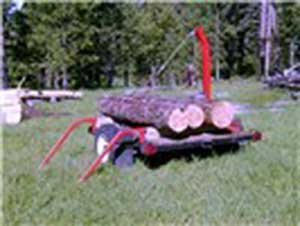Question
I moved to the Big Island of Hawaii and I find the lumber business here completely unpredictable. Iím trying to get a handle on KD koa. I cannot find much about it online and I fear my biggest resources are on other islands.
The KD ranges from 19-30% MC! Well the 30 never made the kiln and got thrown in with the rest I'd guess as my AD never gets below 29% in most of a year. The average RH here on the windward side is 74% My work will sell and live on the leeward side where the RH is 65%. My shop on a dry day is 55% and the temp at about 85 under the metal roof with the doors open. I understand that Koa is thought to be similar to walnut in SG. I have an Electro Physics MM pinless type and it goes to 100.
I know the process for identifying SG but do not have a precise enough scale at this time to proceed in that direction. SG for koa from the EP Moisture Meter info stated .6 but black walnut I believe is .55 - not much difference there anyhow.
I have learned a bit from microwaving a piece 8.85" wide rift sawn,28% MC and read the MC the next morning, too hot to read that night . I stored in a zip lock overnight. The next morning it was 5% and 8.55" in width. I have witnessed it come to an EMC of about 12-13%. 13% on a day of 68-69%RH and has grown to about 8.66". To me this about a .013" change per 1% RH. On the right track?
So, part of my problem I am sorting through is sever movement as I re-saw purchased koa lumber that has be KD to about 20%. First 20% does not seem to be an appropriate MC for my work if my sample hangs out at 13 %, which to me means that 20% KD will further shrink .1369" wide board. I guess that's not too bad? I have just been making my panels tight knowing they will only contract.
My big problem lies with the re-sawing as they cup drastically right from the bandsawn and bow along the length as well, sometimes not as much as others. The MC says 19-23%. The cup is toward the center. Does this mean the wood was dried too fast and the result is structure in compression stress? Most all the lumber is QS or rift sawn for figure.
I would like to try to identify the cause of the problem of the purchased stock to learn not what to do with my own attempt at kiln drying. Also, does anyone know what the schedule might be for 8/4 Koa? I have a schedule for 8/4 walnut. What would I need to think about when adopting a schedule to use? Just SG? Or is this a live and learn, trial and error process? I plan to proceed with a small 4x4x8 plywood, insulated, solar kiln with the basic concept gleaned from Gene's article from an old FWW book. Also, some of the AD koa I have re-sawn laid flat.
Forum Responses
(Sawing and Drying Forum)
From contributor S:
Short answer to lots of questions: you need to AD koa about a year to get the rich colors. Koa is very forgiving in the kiln. A walnut schedule is always a good place to start. Koa is often cut from fallen branches - big branches. They are going to have stress and the problems associated with small logs.
Yes, they mill up every little part of a koa tree, every branch and twig, and sell it here devoid of any real grading system. So I understand reaction wood. Cupping during re-sawing to me is drying stress. I feel that with a MC as high as 20% and sever cupping, that the wood was put in the kiln at way too high a MC and dried way too fast. Collapsing cells in the core creating compress stress, creating cupping toward the center.
If I re-saw a plank into three equal portions, each outside portion will cup toward center, center remainder will lay flat. Can anyone confirm from experience that this could be drying stress?
Also, If the AVG RH is 65 and 75% (from one side of the Island to the other) it seems I should shoot for an EMC of about 14-15%, initially drying to maybe 13%. Is this logical? Or should I shoot for the lowest possible RH of 55% and 11% MC approx?
